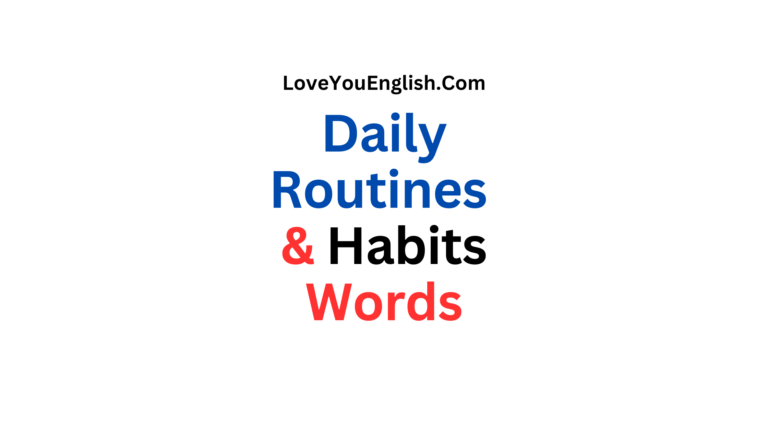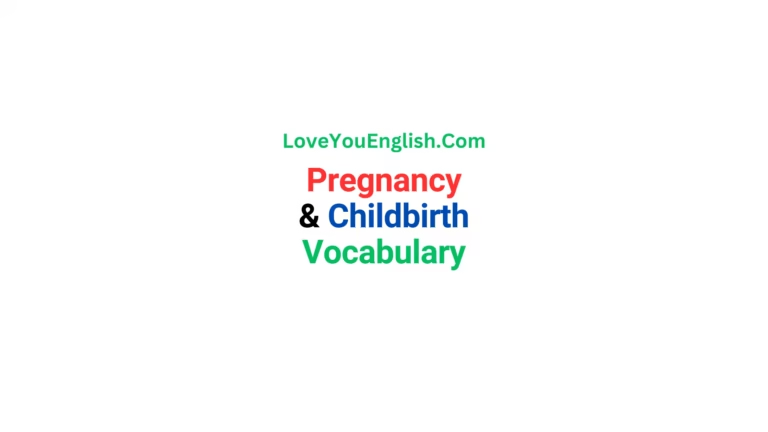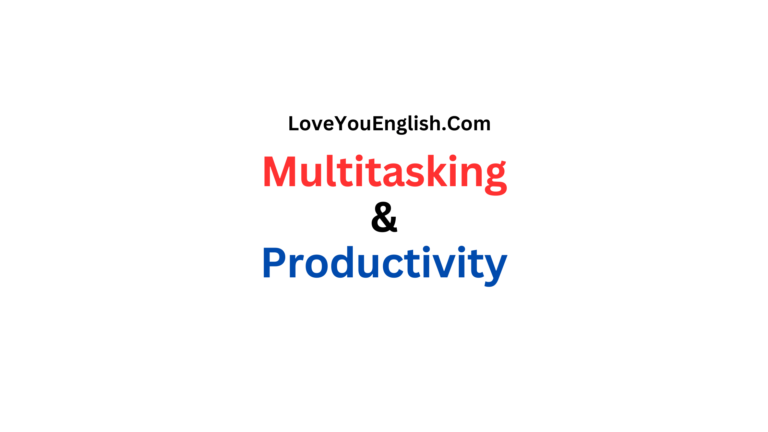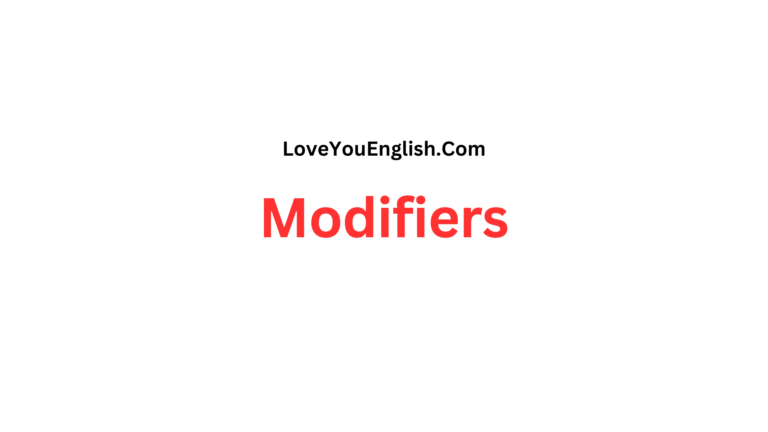Essential Vocabulary: Parts of the House
Have you ever tried to explain a problem in your home but couldn’t find the right words?
Understanding the vocabulary for different parts of a house isn’t just helpful for homeowners—it’s essential for everyone.
Whether you’re renting your first apartment, reporting maintenance issues, or simply trying to communicate more clearly, knowing these terms can make life much easier.
Exterior Parts of the House
Foundation
The foundation is the solid base upon which the entire house is built. Usually made of concrete, the foundation supports the weight of the house and keeps it level. A strong foundation prevents the house from sinking or shifting over time.
Walls
The walls of a house provide structure and separate the interior spaces from the outside world. Exterior walls are designed to withstand weather conditions and usually contain insulation to help maintain comfortable temperatures inside.
Roof
The roof covers the top of the house, protecting it from rain, snow, and sun. Common roofing materials include asphalt shingles, metal, tile, and slate. The shape of the roof can vary, with some homes having flat roofs while others feature pitched (sloped) designs.
Gutters
Gutters are channels that run along the edge of the roof to collect rainwater and direct it away from the house. This helps prevent water damage to the foundation and basement.
Downspouts
Downspouts are vertical pipes connected to the gutters that carry rainwater from the roof to the ground, usually directing it away from the house.
Siding
Siding is the material that covers the exterior walls of a house. Common types include vinyl, wood, brick, and fiber cement. Siding protects the structure from weather damage while also providing an aesthetic finish.
Windows
Windows allow light and air into the house while keeping out unwanted elements. They typically consist of glass panes set within frames made of wood, vinyl, or aluminum.
Doors
Doors provide entry points to the house and between rooms. The main entry door is often called the front door, while secondary entries might include back doors, side doors, or patio doors.
Chimney
A chimney is a vertical structure that allows smoke and gases from a fireplace or furnace to safely exit the house. Not all homes have chimneys, especially newer ones with alternative heating systems.
Porch
A porch is a covered area attached to the entrance of a house. It provides shelter from the weather while entering or leaving and can serve as an outdoor living space.
Deck
A deck is an open, usually elevated platform attached to the house, typically at the back. Unlike porches, decks are often uncovered and used primarily for outdoor relaxation and entertainment.
Interior Parts of the House
Rooms
Living Room
The living room (also called a sitting room or family room) is a space for relaxing, entertaining guests, and spending time with family. It typically contains comfortable seating like sofas and armchairs.
Kitchen
The kitchen is where food is prepared and often where meals are eaten. It contains appliances like stoves, refrigerators, and sinks, as well as cabinets for storage.
Bedroom
Bedrooms are private spaces primarily used for sleeping. Most homes have multiple bedrooms, with the largest often designated as the master bedroom.
Bathroom
Bathrooms contain fixtures for personal hygiene, including toilets, sinks, and bathtubs or showers. A full bathroom has all three fixtures, while a half bathroom (or powder room) typically only has a toilet and sink.
Dining Room
The dining room is specifically for eating meals, particularly formal ones. It usually contains a table and chairs.
Basement
The basement is a room or set of rooms located below ground level. It may be finished (designed as living space) or unfinished (used primarily for storage or utilities).
Attic
The attic is the space directly below the roof. Like basements, attics can be finished or unfinished and are often used for storage.
Garage
A garage is a covered space for parking vehicles. Many garages are attached to the house and provide an additional entry point.
Laundry Room
The laundry room houses washing machines and dryers, as well as supplies for cleaning clothes.
Structural Elements
Ceiling
The ceiling is the upper surface of a room, opposite the floor. It can be flat, vaulted (curved upward), or coffered (featuring recessed panels).
Floor
The floor is the walking surface of a room. Floors can be covered with various materials, including carpet, hardwood, tile, vinyl, or laminate.
Stairs
Stairs are a series of steps allowing movement between different levels of a house. They can be straight, curved, or arranged in switchbacks.
Hallway
A hallway is a corridor that connects different rooms in a house. Hallways provide pathways through the home and can also feature storage spaces like closets.
Closet
Closets are small storage spaces with doors, typically built into walls. They’re used to store clothing, linens, and other household items.
Doorway
A doorway is the opening in a wall where a door is installed. Some doorways may not have actual doors but serve as transitions between spaces.
Molding
Molding refers to decorative strips of material used to cover transitions between surfaces. Common types include baseboards (at the junction of walls and floors), crown molding (where walls meet ceilings), and door casings (around doorways).
Utility Systems
Electrical System
The electrical system distributes power throughout the house. Key components include:
- Electrical Panel: Also called a breaker box or fuse box, this controls the distribution of electricity.
- Outlets: Also called power points or sockets, these are where you plug in appliances and devices.
- Switches: These control the flow of electricity to lights and some outlets.
Plumbing System
The plumbing system brings clean water into the home and removes waste water. Important parts include:
- Pipes: These carry water throughout the house.
- Fixtures: These include sinks, toilets, bathtubs, and showers.
- Water Heater: This device heats water for bathing, washing dishes, and other uses.
Heating, Ventilation, and Air Conditioning (HVAC)
The HVAC system maintains comfortable temperatures and air quality. Components include:
- Furnace: This heats air that is then distributed through the house.
- Air Conditioner: This cools the air in warm weather.
- Vents: These are openings where heated or cooled air enters rooms.
- Thermostat: This controls the temperature by turning the heating or cooling systems on and off.
Why This Vocabulary Matters
Learning these terms isn’t just about increasing your knowledge—it has practical benefits too.
When you need to report a maintenance issue to a landlord or repair service, using the correct terminology helps ensure the problem is understood and addressed properly.
If you’re shopping for a home, understanding these terms helps you evaluate properties and communicate with real estate agents more effectively.
Even casual conversations about your living space become clearer when you can precisely identify what you’re talking about. Instead of saying “the thing that carries water from the roof is broken,” you can simply report “the downspout is damaged.”
By familiarizing yourself with these essential house vocabulary terms, you’re equipping yourself with knowledge that will serve you well whether you’re a homeowner, renter, or simply someone who lives indoors.
The next time something in your home needs attention, you’ll be able to describe it accurately—and that’s the first step toward getting it fixed.







